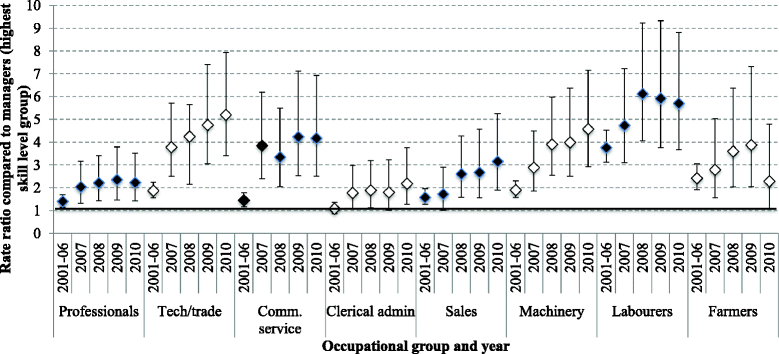Occupational class differences in suicide: evidence of changes over time and during the global financial crisis in Australia
- PMID: 26391772
- PMCID: PMC4578370
- DOI: 10.1186/s12888-015-0608-5
Occupational class differences in suicide: evidence of changes over time and during the global financial crisis in Australia
Abstract
Background: Previous research showed an increase in Australian suicide rates during the Global Financial Crisis (GFC). There has been no research investigating whether suicide rates by occupational class changed during the GFC. The aim of this study was to investigate whether the GFC-associated increase in suicide rates in employed Australians may have masked changes by occupational class.
Methods: Negative binomial regression models were used to investigate Rate Ratios (RRs) in suicide by occupational class. Years of the GFC (2007, 2008, 2009) were compared to the baseline years 2001-2006.
Results: There were widening disparities between a number of the lower class occupations and the highest class occupations during the years 2007, 2008, and 2009 for males, but less evidence of differences for females.
Conclusions: Occupational disparities in suicide rates widened over the GFC period. There is a need for programs to be responsive to economic downturns, and to prioritise the occupational groups most affected.
Figures


References
-
- Chang S-S, Stuckler D, Yip P, Gunnell D. Impact of 2008 global economic crisis on suicide: time trend study in 54 countries. BMJ. 2013;347: http://dx.doi.org/10.1136/bmj.f5239. - DOI - PMC - PubMed
Publication types
MeSH terms
LinkOut - more resources
Full Text Sources
Other Literature Sources
Medical

